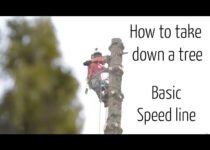Do-It-Yourself Tree Removal
Trees can add beauty and value to your property, but they may also need to be removed if they are too close to homes, buildings, or other structures on the land. A certified arborist will assess the position of a tree to determine whether it poses a threat, and will provide guidance on the best course of action. While it is a good idea to have an arborist remove trees that are dangerous, homeowners can do some minor tree removal on their own.
Before you attempt any major tree removal, make sure that you understand the process and have all of the necessary equipment and safety gear. You will also need to know what permits, if any, are required for the task. You should also be aware of local laws regarding tree removal, and check with your utility company to ensure that they will not need to be called in to handle power lines.
Unless you are an experienced professional, it is usually better to have a tree service company take care of removing a large or problematic tree from your property. This is especially true for a tree that is in close proximity to homes and other buildings, or has been damaged or diseased.
An experienced arborist can use the appropriate tools to cut and fell a tree safely, and will be able to ensure that the stump is removed as well. They will also be able to advise you on how to best prevent the tree from re-growing, which can sometimes happen when it is removed from the ground.
If the tree is not too close to anything and you have experience using tools, you can do some minor tree removal on your own. Before starting, it is important to clear the area surrounding the tree and remove any lawn furniture, vehicles, or fire pits that might be impacted when the tree falls. Then, walk around the tree to look for any potential hazards. For example, if the tree is leaning in a particular direction or has more weight on one side, this will affect how the tree falls.
Start by cutting a notch in the tree at a 70-degree angle, using a chainsaw or axe. Then, create a final horizontal line in the tree that aligns with the bottom of the upper cut, which is also known as a felling notch. The tree will fall during or soon after this step is completed.
It is a good idea to have an assistant standing back a few feet from you, watching for falling branches and letting you know when it is safe to move forward. It is also a good idea to wear protective gear, including gloves and eye protection, and to wear a hard hat with a face shield.


